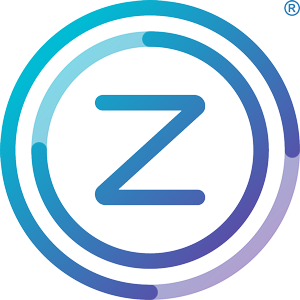What are personas and how to define them?
 Zoox Smart Data - 16 de January de 2020.
Zoox Smart Data - 16 de January de 2020.
People like to buy what is offered specifically for them. Well-defined personas make all the difference for the business. According to Viver de Blog surveys, traffic on the websites of companies with defined personas increases around 210% and sales generated by them are 124% higher.
What are personas?
Persona is a fictional representation of the ideal client of the business, created to help you better understand who the customer is and what it needs. Briefly, personas are a market segmentation tool to better serve customers.
It is based on real data on the clients’ behavior and demographic characteristics, as well as their personal stories, motivations, objectives, challenges, and concerns. Understanding who purchases is essential not only for product development and sales but also for the creation of content and digital marketing, as companies can change the whole marketing strategy according to the persona.
Now look at the basic example of a Persona:
Name: Flávia
Age: 34 years old
Occupation: Marketing Manager (Hospitality Sector)
About: Flavia has been a Marketing Manager for 5 years. She copes with challenges to prove the results of the marketing actions and every investment in her department. She has an innovative profile, thinks way beyond a quality delivery, wishes to enchant the customer.
Challenges: She wants to get away from the trivial. She believes that service quality is already something that many companies offer nowadays. She sees that a stable WiFi pleases customers, and wants to have everything running perfectly, even when they go through periods with greater volume of data usage.
She wants to offer unique experiences. She longs for each client’s opinion. She knows companies that implement WiFi networks. However, she is still unaware of the value of having a data collection platform.
Using this persona as a starting point, we can create more assertive content and make it more interesting for Flavia. Thus, the lead generation is assertive. Having personas is understanding where your ideal clients are in the Purchase Journey, where would they like to go and how you can help them get there.
Persona x Target Public
It is quite common that there is a misinterpretation in concepts. Therefore, we must be aware of the differences between the two terms.
See a practical example:
- Target: Men and women, 24-30 years old, single, graduated in engineering, with an average monthly income of $ 3,500. They intend to increase their job skills and like to travel.
- Persona: Cesar is 28 years old, an IT manager in the hospitality sector. He needs to be aware of trends in the IT market. Among the main duties of this professional: Choose the information technology projects taking into account existing infrastructure and systems, manage projects, prepare strategies, etc. His sector is not only an operational part, but it is also fully related to the company’s strategy.
While the audience survey provides superficial demographic information such as age, economic class, and profession, the Persona will go further, bringing more information on consumer desires and challenges
Setting my business’ persona?
Meeting the challenge of creating personas can be easier when you ask the right questions. If you have a customer base, this will be the perfect source to start investigating. Even if you have different profiles of people or companies who consumed your product, some of them tend to exemplify your persona.
To begin, come up with a script to conduct interviews and think about the approach:
- Choosing people:
- Notice who are the most active people in your social networks, especially those who interact more often;
- Review the profile and the person’s posts, you’ll already have some data and insights;
- Think of basic questions related to data for the creation of personas;
- Think of a conversation format that is fluid, not only composed of questions;
- Leave room for the interviewee comment on other matters, they can bring interesting information;
- Prepare for the possibility of insights and opportunities to discover key points for the construction of different profiles.
- Approach:
-
- Write a private message with a personal profile introducing yourself;
- Tell a bit about why you are reaching out to them and propose a talk to learn more about their shopping habits;
- If possible, offer some benefits as a way to thank them at the end
Which questions should be asked?
Job
- What is their position?
- What are the challenges in their work?
- What skills are required to perform their tasks?
- What are the tools they use every day?
Company
- What is your business’ segment?
- How big is the company?
Objectives
- What are their main responsibilities?
- What are their main goals?
Information and content
- How do they learn new skills and information about their work?
- What are the main publications and / or blogs they consume?
- What are the social networks that they belong and how often they use them to learn something?
Personal information
- Describe themselves. (Age, family, marital status, children, etc.)
- Ask them about their professional background.
Shopping habits
- Where do they usually do most of their shopping? (Physical store / online)
- How often they shop online?
- Do you usually research before shopping?
One tip is to focus as much on satisfied customers as dissatisfied ones. In both cases, you will learn something about the perception of your product and what challenges customers are facing. Moreover, there is no need to limit yourself to a single Persona if you think you have segmented too deeply.
You can gather this information through email, surveys, public places, conversations on social networks, blogs, events or through your website.






Comments